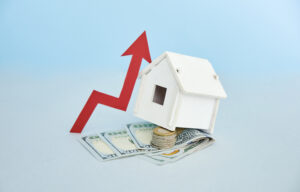The Impact of Interest Rate Changes on Commercial Property Investments

Interest rates play a crucial role in commercial property investments, influencing everything from loan affordability to property values and investor returns. Whether you’re a seasoned real estate investor or just starting, understanding how interest rate fluctuations affect commercial properties can help you make smarter financial decisions and maximize your investments.
In this blog, we’ll break down how rising and falling interest rates impact commercial real estate, what investors can do to mitigate risks, and how to position yourself for success in any market.
Why Do Interest Rates Matter in Commercial Real Estate?
Interest rates determine how much it costs to borrow money. Since most commercial real estate transactions are financed through loans, even a small rate increase can significantly affect investment profitability.
Here’s why interest rates matter in commercial property investments:
✔ Affect Loan Costs – Higher rates mean higher monthly mortgage payments.
✔ Impact Property Values – As borrowing costs rise, property demand may decrease, affecting prices.
✔ Influence Cap Rates – Higher interest rates often lead to higher capitalization rates (cap rates), influencing investment returns.
✔ Shift Investment Strategies – Investors may adjust their approach based on financing availability and cost.
Understanding these dynamics allows investors to adapt to market changes and make informed decisions.
How Do Interest Rate Changes Affect Commercial Property Investments?
1. Rising Interest Rates: Challenges for Investors
When the Federal Reserve raises interest rates, borrowing becomes more expensive, leading to:
Higher Loan Costs & Mortgage Payments
- A higher interest rate means larger monthly payments, reducing the cash flow from rental properties.
- Investors may struggle to qualify for loans with favorable terms.
Example:
A $1,000,000 loan at 5% interest over 20 years results in a monthly payment of $6,600.
If the rate increases to 7%, the payment jumps to $7,753—a 17% increase in costs!
Lower Property Values
- Higher interest rates often lead to higher cap rates, reducing property values.
- Investors may demand lower prices to compensate for increased financing costs.
Reduced Buyer Demand
- Fewer investors can afford high-cost financing, leading to slower property sales.
- Some may shift to cash purchases or wait for lower rates before investing.
Strain on Tenants & Rent Growth
- If commercial tenants rely on financing, their costs also rise, potentially leading to rent negotiation challenges.
- Investors may struggle to raise rents, impacting overall return on investment (ROI).
2. Falling Interest Rates: Opportunities for Investors
When interest rates drop, investors and property owners benefit in multiple ways:
Lower Borrowing Costs
- Lower rates reduce monthly loan payments, improving cash flow and profitability.
- Easier access to affordable financing increases buying power for investors.
Example:
A $1,000,000 loan at 7% interest costs $7,753/month.
If rates drop to 5%, the payment falls to $6,600, saving $1,153 per month!
Increased Property Values
- Lower rates lead to higher property demand, driving property prices upward.
- Investors benefit from rising asset appreciation and potential resale profits.
More Buyer Activity & Higher Returns
- Lower interest rates attract more buyers and investors into the market.
- Commercial properties may generate better returns due to increased rental demand.
Easier Refinancing Opportunities
- Property owners can refinance existing loans at lower rates to reduce debt service costs.
- Investors can use excess cash flow for property upgrades or expansion.
How to Navigate Interest Rate Fluctuations as a Commercial Investor
Regardless of whether rates are rising or falling, investors can take proactive steps to protect their investments and maximize returns.
1. Lock in Fixed-Rate Loans Early
- If rates are expected to rise, secure fixed-rate financing to protect against future increases.
- Avoid adjustable-rate loans (ARMs) unless you plan to sell or refinance quickly.
2. Improve Your Debt Service Coverage Ratio (DSCR)
- Higher DSCR (1.25 or more) makes it easier to qualify for loans in a high-rate environment.
- Increase rental income or reduce operating expenses to boost your DSCR.
3. Explore Alternative Financing Options
- Consider bridge loans, private lenders, or owner financing when traditional loans become too costly.
- Look for creative financing solutions like seller-backed mortgages or partnership investments.
4. Focus on Strong Rental Markets
- Choose properties in high-demand areas where rental income is stable.
- Look for markets where tenant demand remains strong, even during economic shifts.
5. Use Refinancing Strategically
- If rates drop, refinance existing loans to lower monthly payments and free up cash flow.
- Use refinancing to fund new acquisitions or renovations.
6. Diversify Your Portfolio
- Don’t rely on a single property type—invest in different asset classes like office spaces, retail centers, or multifamily units.
- A diversified portfolio helps mitigate risk during market fluctuations.
Final Thoughts: Smart Investing in Any Interest Rate Environment
Interest rate changes are a natural part of the commercial real estate cycle. Whether rates rise or fall, successful investors adapt by:
✔ Locking in favorable financing when rates are low
✔ Refinancing to improve cash flow
✔ Focusing on high-demand rental markets
✔ Exploring alternative funding options
Staying informed about interest rate trends and working with experienced financial professionals—like those at Boathouse Commercial Funding Group—can help you navigate the market confidently and make profitable investment decisions.
